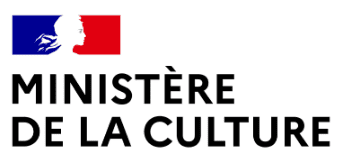Jean-Baptiste Alazard
In the Christian tradition, John the Baptist is the final prophet, the prophet who, summing up the past, opens up on the possibility of an advent or coming on the far side of the present. It takes a lot of nerve and a great sense of humour to call oneself a prophet right from the film’s title. But it’s with extreme seriousness and loyalty to his namesake saint that Jean-Baptiste Alazard accomplishes the mission he’s set himself of returning to the past to reveal in it the promise of justice yet to come. The past is his own, and that of those with whom he’s chosen to live. “I’d like to paint men and women with a certain something of the eternal” (Van Gogh)… The filmmaker lays claim to this ambition and – sweet miracle – succeeds! Frames and cuts sculpt each shot like a jewelry case that makes each gesture and face gleam, setting them in eternity. At first, they’re brief, sumptuous shots, dazzling slivers of beauty plucked from a decade spent living far from the city, in the folds and margins where the sovereign life forms of a defiant people blossom. Then there are fragments of a more ancient past, taken from the history of cinema: salutations to admired masters, snatches of their films blended into the raw material with editing that exalts similarities, affirms the fraternity of forms, and produces evidence of a different humanity through the ages. A voice of prophetic resonance sings praise to this minority humanity, to the lives of these deserters… A nostalgic album of a decade of friendships and struggles, a eulogy to a libertarian people and their festive and riotous ethics – this is the miracle of Saint John Baptist: at every moment, in every image, the future bursts forth from among the memories.
(Cyril Neyrat)
- Flash Competition
- 2021
-
 Flash Competition
Flash Competition
- 2021
SAINT JEAN-BAPTISTESAINT JOHN THE BAPTIST
Jean-Baptiste Alazard
Interview with Jean-Baptiste Alazard
Following La Buissonnière (FID 2013) and Alléluia (FID 2016), Saint Jean Baptiste confirms the exclusive allegiance of your cinema to deserting, refractory, minority figures and people, living in the folds and margins of rural France. Can you tell us about this vocation? When and how did it come to you? What motivates and sustains it?
I usually film the people around me, with whom I share my daily life, in the environment where I live which happens to blend into the invisible valleys and the people who live there. I was born in the mountains. I went away for my studies and naturally returned once they were over, with the will to find my way to make cinema there. I also realized that there were few traces or testimonies of these lands and I saw myself as a kind of “scribe” of this hidden modernity.
Saint Jean Baptiste differs from your previous films by its explicit, consciously retrospective character: you take stock of a decade shared, between celebration and struggle, with your friends and fellow activists. You also sing the praises of these people whose choices and existence you share in. Why did you choose to look backwards in this way? Why was it important for you?
La Buissonnière and Alléluia, along with L’Age d’or (2019), make up a trilogy entitled La Tierce des Paumés. I made Saint Jean Baptiste with the discarded rushes from the editing of these three films, as an epilogue. When I started this trilogy, I didn’t know where it was going to lead me and it was perhaps a question today of taking a step back from the path I had taken. Unlike the previous films which were character-driven, this one is in the first person. I needed to explain my point of view regarding what I had experienced. In addition, my films are part of a certain anti-establishment effervescence that emerged during the past decade, an imagination which is now being challenged in this new decade. It was therefore a question of taking stock in order to try to reinvent ourselves.
“Filmed between 2010 and 2019 throughout France,” the credits state, specifying “The Pyrenees – Corbières – Aveyron – Dunkirk – Thiers”. What made you choose to visit these places? In what ways, daily or not, did you involve cinema?
The trips and stays are driven by friendships, struggles, parties, helping out on local projects or for harvests, and by the touring to promote my films. There are also the places where I live or have lived on a daily basis. My relationship to cinema is close to that of a filmed diary, like those of Jonas Mekas: I don’t separate cinema from life. I can film a bit every day, or not, depending on my inspirations, desire, the light, the need to bear witness.
From this decade, from this shared life, you have retained some fragments: faces, gestures, in shots captured on film, with tight, sharp frames, and strong lights and colours. Can you tell us about how you produced these shots and your inclinations and decisions during the shooting? And also about the editing, when you had to take fragments from this material and arrange them?
When shooting, I film when I have the sensation of experiencing a kind of epiphany. When I edit, I try to recompose the sensation that I experienced or that stirred me while I was filming. There are relationships of image, of colours, of movements, of scales between faces and landscapes that sometimes make shots filmed several years apart and in very distant physical spaces connect. Perhaps the fact of having accumulated material over so many years causes a density in the ellipse that allows us to come within reach of our relationship to memory, to remembrance, to the dialogue between present, past and future. The editing is also unhesitatingly guided by the relationship with the sound, music, and voice.
Tell us about the text spoken through a prophetic voiceover. What materials, models or influences did you draw on to compose it?
I composed the voice-over from material I had accumulated in my notebooks over the years. It is made up of both quotations and my own writings and testifies, I believe, to my obsessions. I then proceeded as I do for the editing of images: by cutting and pasting, until it reached its final form. I imagine that it resembles the “cut-up” technique developed by Brion Gysin using Burroughs’ texts.
This material is accompanied by a series of fragments from a medley of films from the history of cinema: Paradjanov, Pasolini, Bartas, up to a homage to Straub and Huillet via Gérard Courant’s Cinématon. How did you compose this bouquet? To whom is it addressed?
I chose these fragments partly out of a need to humbly construct my own history of cinema, but I also considered them as archives allowing me to inscribe the gestures and situations I had filmed in a certain tradition. A tradition of pagan, community life, of gestures that have allowed us to live together for ten thousand years, since the beginnings of small-scale farming. A whole tradition, know-how and ways of living that are considered obsolete today, but which for me embody the future. Today, a small minority keeps these ancestral gestures alive; it maintains them as one does the embers of a fireplace before reloading it with wood for the fire to start again.
A special place seems to be accorded to the figure of Van Gogh, by way of Pialat’s film. What can you tell us about this?
Van Gogh wrote that he suffered from not being able to join the other horses in the meadow to run with them, because he felt obliged to paint them. It is this tug-of-war between living his life and the need to bear witness to it that interests me, and his way of resolving it through art. His painting also inspires me equally for the combination of a documentary approach and an investigation into light and colour, as for the choice of rural life as subject.
The first name of the saint who gives his name to the film is also yours. One can read in it more than a touch of humour. Saint John the Baptist is, in the biblical tradition, the last prophet, the one who, at the meeting of the Old and the New, announces – violently – the coming of a revolution. Is this your intention also? Is cinema’s mission to prophesy?
I don’t think my aim is to prophesy, but I try to emphasise the poetic force of life, the force that sets us in motion, that makes us struggle with ourselves. From there can arise a collective awareness and action towards the kind of revolution I would like to see.
Interview by Cyril Neyrat
-
 Flash Competition
Flash Competition
Technical sheet
France / 2021 / 20'
Original Version : French.
Subtitles : English.
Script : Jean-Baptiste Alazard.
Photography : Jean-Baptiste Alazard.
Editing : Jean-Baptiste Alazard.
Sound : Jean-Baptiste Alazard.
Production : Vincent Le Port (Stank).
Filmography : L’âge d’or, 2020. Alléluia !, 2016. La Buissonnière, 2013.
- Autres films / Flash Competition






